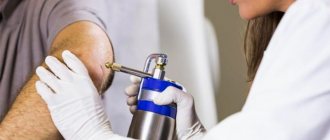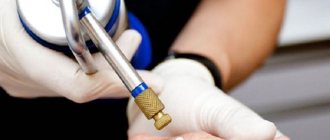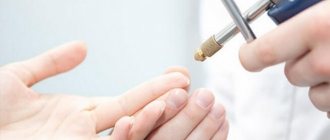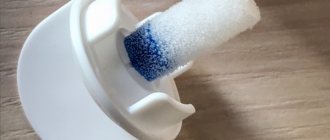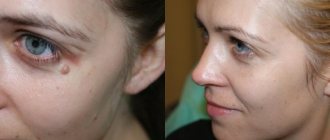A wart is a benign neoplasm on the skin, which most often causes psychological discomfort and self-doubt. However, this is not only a cosmetic defect. A wart is a consequence of decreased immunity, mental trauma and hypertension, and is also a source of the human papillomavirus. That is why experts recommend removing tumors whenever possible. Currently, methods of cryodestruction, surgical, radio wave and laser removal of warts are used. Each of them has advantages, which are the focus of this article.
Wart removal methods
Warts are neoplasms that in most cases do not harm the human body, but affect its aesthetics. Their size can vary from 1 mm to 1 cm. The larger they become, the more discomfort they cause. Currently, there are many proven and safe methods for removing warts that allow you to get rid of a cosmetic defect. Among them:
- Radio wave method. Here, the growth is exposed to high-frequency radio waves, which contributes to the destruction and killing of pathological cells. Despite its high efficiency, the method has one drawback: after the manipulation, a blister remains, the healing of which takes a lot of time.
- Cryodestruction. The method involves exposing the neoplasm to liquid nitrogen. In the process, an epithelial bubble is formed, which causes pain. The wart dies along with the blister, and after it is rejected by the body, the treated area is overgrown with healthy young skin.
- Ultrasonic method. In its effect, this technique is similar to the radio wave method, only here the radio waves are replaced by high-frequency sound. This method is considered one of the most effective and painless.
- Surgical method. One of the most radical techniques is used only in emergency situations. These include the process of degeneration of a wart into melanoma or the beginning of the death of surrounding tissues.
- Laser method. The technique is based on laser exposure. This is the most modern technology, after which only a small scar or shallow hole remains, healing within several months.
Cryodestruction in detail
This procedure successfully copes with baldness and helps restore normal growth of hair follicles. The trichologist will prescribe the required number of procedures and accompanying treatment. Let us dwell on other conditions for which cryodestruction is most often used.
Removal of hemangiomas and keratomas
Hemangiomas and keratomas are benign tumors on the body that are age-related. Hemangiomas occur in infancy - every 6th child experiences a hemangioma. And people suffer from keratomas in old age. Both types of tumors can be simply removed using cryodestruction.
Removal of warts, papillomas, spines
Removal of papillomas on the face in Perm is also carried out at the Genesis clinic using cryodestruction. Removal of tumors using this method is possible even on the face and it does not leave scars.
Radio wave removal of warts
The technology gives the surgeon the opportunity to cut out the tumor literally “at the root.” It is used to remove the following types of warts:
- flat,
- plantar,
- speakers.
- hanging.
In addition, the method is suitable for removing genital warts. The procedure itself takes 10-20 minutes and is almost bloodless. To numb the area being treated, the doctor uses local injection anesthesia or a superficial application of a special cream. To remove the growth, a specialized device is used - Surgitron, also known as a radio knife. It has a gentle effect on the problem area of the skin without affecting healthy tissue, without irritating nerves or causing muscle contractions.
The main advantage of the radio wave method is minimal trauma, since radio waves practically do not affect surrounding tissues. The risk of inflammation and complications is also minimal.
Benefits of the procedure
The cryodestruction method is very popular for removing skin lesions because it has many advantages. Here are some of them.
- does not damage healthy tissue;
- painlessness;
- effectiveness of the method;
- regeneration of tissues subjected to the procedure;
- does not contribute to the formation of scars;
- activates metabolic processes in the skin;
- does not cause complications.
Our clinic has introduced a cryodestruction procedure. For our beloved patients, we purchased the most modern equipment and invited an experienced specialist to the team. We are pleased to invite you to a reception! Read reviews about the procedure on this page. Find out the price for cryodestruction from the clinic administration.
Removal of warts by cryodestruction (liquid nitrogen)
Cryodestruction is a modern method of treating superficial benign neoplasms, in which pathological tissues are first cooled to an extremely low temperature and then destroyed. Liquid nitrogen is used as the active substance. It is under its influence that benign growths die, and cells with a disturbed structure slow down their growth.
Cryodestruction of warts and other neoplasms includes the following stages:
- Exposure to liquid nitrogen. The doctor's main instrument is a wooden stick with cotton wool or gauze wound at one end. With its help, liquid nitrogen is removed from the container and applied to the growth. After this, the doctor presses the stick onto the wart and holds it for 5-30 seconds.
- Break for 1-2 minutes. A pause is needed to assess the effectiveness of the impact. First, the skin turns white, then thaws, which allows the doctor to determine the magnitude and depth of exposure to the substance. Based on this, he decides whether to repeat the procedure or not.
- Result. After all exposures, the skin becomes whitish-pink, which indicates the complete killing of pathological cells.
The next day after the procedure, a bubble filled with colorless or reddish liquid appears on the treated area. The color of the liquid is affected by the depth of exposure. The blister cannot be covered with adhesive tape. If necessary, it can be covered with a gauze napkin, and then secured with an adhesive plaster. During water procedures, it is important to maintain the integrity of the bladder. If the treated area causes pain, you may take a painkiller.
Sometimes warts do not respond immediately to liquid nitrogen. Therefore, if necessary, 3 weeks after the first correction, the doctor repeats the procedure. Usually two sessions are enough.
Removal of benign tumors with liquid nitrogen
Before removing papillomas, warts and moles with liquid nitrogen, clinic specialists conduct an examination and prescribe a diagnosis. Based on the results of the examination, you can select a suitable treatment method. Warts are most often benign. But a dermatologist must verify this.
Fibroepithelial polyps
A fibroepithelial polyp or papilloma is a benign tumor that looks like a wart. It rises above the level of the skin and has a wide base or a thin stalk. Most often, the polyp appears on the skin of the neck, has a brown or flesh-colored tint and an elongated shape. Such papillomas are also called filamentous. They occur frequently, which indicates the widespread distribution of human papillomavirus infection among the population.
Threaded polyps are often damaged during bathing, shaving, and wearing tight clothing. In this case, the tumors can bleed and become inflamed. And any injury to viral papilloma increases the risk of tissue malignancy, especially under the influence of ultraviolet radiation. In addition, a polyp on open areas of the body attracts unnecessary attention and looks unaesthetic. It is better to remove it using liquid nitrogen. Threaded papillomas can be easily removed through cryodestruction.
Seborrheic keratosis
Seborrheic keratosis (basal cell papilloma, senile wart) often occurs in older people. In young patients, pathology rarely appears. The disease is associated with the chronic course of human papillomavirus infection. The papilloma virus enters the human body initially at an early age. During life, activation of the pathogen may occur with the formation of viral warts.
Basal cell papilloma is characterized by slow growth. First, an inconspicuous brown spot appears on the skin, which can grow up to 5 cm or more. On top, the neoplasm has easily merging scales. The risk of seborrheic keratosis becoming malignant is low. But this does not mean that the disease cannot be treated. Surgical methods for removing tumors whose growth is associated with HPV are necessary. Without this, keratosis will progress, significantly reducing the patient’s quality of life and causing undesirable health consequences.
Removing warts with liquid nitrogen
Warts are benign neoplasms caused by the human papillomavirus. The risk of malignancy still remains, but for certain types of HPV. Warts grow on any part of the body, often appearing on the hands, soles, and in the area of natural folds of the body.
If papillomavirus growths appear on the skin and mucous membranes, you must contact a dermatologist to undergo a comprehensive examination and determine the type of active virus. Some types of HPV are prone to malignancy.
Vulgar warts
Vulgar warts most often occur in young and middle-aged people. The disease often progresses in children, who often damage the skin of their hands, and HPV easily penetrates through cracks and cuts and causes the activation of human papillomavirus infection. Vulgar or simple warts are usually small in size. They are found in groups, most often on the outside of the fingers.
If, after removal with liquid nitrogen, warts appear again, it is necessary to carry out complex antiviral therapy to stop the multiplication of papillomavirus in the child’s body. But any systemic drugs can be given to children only with the permission of a qualified specialist.
Flat warts
Flat warts are flesh-colored and practically do not rise above the skin. Small nodules can be easily removed with liquid nitrogen. The technique does not contribute to the spread of infection to healthy tissue and is not accompanied by bleeding. Flat warts can appear on the face and body. They have a benign course and are not prone to malignancy. In our clinic they will be removed in just a few minutes.
Genital warts or genital warts
Genital warts or genital warts are transmitted through unprotected intimate contact from an infected partner. The new growths have a bizarre shape, similar to cauliflower inflorescences. They can ulcerate, causing skin infection with the appearance of an unpleasant odor and pathological discharge.
Genital warts can occur due to the proliferation of HPV types 6, 11, 16, 18 and other types, many of which have a relatively high oncogenic risk. That is why experts recommend timely removal of genital warts with liquid nitrogen and at the same time using antiviral drug treatment. It is necessary to examine all sexual partners, even if they do not show signs of the disease.
It is recommended to take a comprehensive approach to the fight against human papillomavirus infection and conditionally benign neoplasms on the skin and mucous membranes. In this case, it will be possible to stop further reproduction of HPV and avoid regular relapses.
Comparison of wart removal methods: laser and nitrogen
Most patients are interested in which of the listed methods is most effective. Most often they choose between laser and liquid nitrogen. Each of these technologies has its own advantages. For a laser it is:
- high efficiency,
- speed,
- painlessness,
- no postoperative bleeding.
In addition, the laser allows the surgeon to act in a targeted manner, avoiding nearby healthy tissue. At the same time, he directs a heat beam at the wart, which evaporates the moisture contained in the growth and destroys its structure. Due to the lack of contact with the skin, wound infection during the procedure is completely excluded.
When choosing cryodestruction technology, you should be prepared for the fact that 3-5 procedures will be required to completely remove the tumor. This is due to the fact that the method involves layer-by-layer exposure of pathological tissues to low temperature. If the growth is small, then one treatment is sufficient to freeze and kill it.
Another selection criterion is the cost of therapy. Removing papilloma using cryodestruction is relatively cheap, but the more procedures are required, the more expensive such treatment will ultimately cost. In addition, when exposed to liquid nitrogen, there is a small risk of damage to healthy tissue, and hence the appearance of a scar.
Only a doctor can determine which of the listed methods will be most effective. But to come to a final decision, he must collect anamnesis, conduct an examination of the patient and send pathological tissues for histology.
When is it necessary to remove formations using liquid nitrogen?
- sensation of cosmetic discomfort when located on the lyceum, eyelids and neck;
- genital form that can infect a partner;
- plantar version, causing pain and discomfort;
- location of the formation in a zone of constant friction;
- multiple forms of growths;
Contraindications to cryodestruction:
Before you sign up for the procedure, you must undergo a thorough examination by a specialist to find out the nature of certain formations.
- malignant nature of the formation
- individual intolerance to cold or nitrogen, but this is extremely rare.
- presence of acute infectious diseases
- high pressure
- epilepsy
Surgical removal of warts
Plantar warts are most often removed surgically. As a rule, they are a benign neoplasm, saturated with blood vessels. In its structure, such a growth usually resembles cauliflower. Sometimes it can grow into the skin, causing pain when walking and rubbing against shoes. Plantar warts most often become a source of spread of the human papillomavirus.
The surgical method is used only if conservative therapy is ineffective. First, the doctor takes a test for histology and gives a tetanus vaccination. The operation itself includes the following steps:
- Treating the sole with soapy water.
- Separation of the hyperkeratosis covering the wart in order to determine its contours.
- Skin treatment with povidone-iodine.
- Local anesthesia with mepivacaine (2%) or another drug without the use of vasoconstrictors.
- Light massage with gauze to quickly spread the anesthetic.
- A skin incision and complete excision of the pathological growth.
- Cleaning the cut area using a Jansen spoon.
- After stopping the bleeding, clean the wound with saline solution.
- Treatment of the area with povidone-iodine, followed by application of a bandage.
After the procedure, the patient should try to keep the operated limb in an elevated position. Relative rest is recommended for 48 hours after surgery. During this time, it is necessary to avoid open sources of heat and, if necessary, take painkillers.
After 48 hours, the first dressing is done, during which the dried blood is removed with a scalpel, and the wound is washed with saline solution under pressure. After this, an enzymatic ointment is applied to the treated area, which is covered with polyethylene on top. Using shoes with an orthopedic insole, the patient can already lean slightly on the operated leg.
What is a wart
Warts are caused by the human papillomavirus, or HPV. It depends on its type what kind of neoplasms appear on the skin, what symptoms they are accompanied by and where they are localized. Typically, infection occurs through contact, for example, through a handshake, when infected and healthy skin comes into contact, or through handrails in public transport, household items, etc.
The likelihood of becoming infected with HPV, which leaves unattractive growths on the skin, is especially high in places with high contact and a humid environment (swimming pools, baths, saunas).
The risk increases with minor injuries and inflammations on the skin, through which it is easier for the virus to enter the body.
Why you need to remove warts
The decision to remove a large wart most often arises from the patient’s desire to eliminate an obvious cosmetic defect. Especially if the tumor is located in a place where it cannot be hidden with clothing. For example, on the face or neck.
But solving an aesthetic problem is far from the most important reason to get rid of such a growth on the skin. Benign neoplasms, the appearance of which is caused by certain types of human papillomavirus, can eventually transform into malignant ones. This is especially true for warts, which are often injured, for example, when walking or from contact with clothing.
First of all, the risk group includes patients with significant disturbances in the functioning of the immune system. Genital warts, which appear under the influence of oncogenic types of HPV, are more susceptible to degeneration into cancerous tumors. Also, warts located in the genital area should not be ignored - they are often associated with a virus that can trigger the development of cervical cancer in women.
In addition, being viral in nature, such benign skin tumors can quickly grow and spread throughout the body. At the same time, they cause not only psychological discomfort, but also unpleasant sensations and even pain. This is especially true for warts located on the soles of the feet, palms, armpits, genitals and mucous membranes of the eyelids.
What to choose: cryodestruction or laser?
Both procedures can quickly and almost painlessly rid you of tumors. However, cryodestruction is only effective when it comes to small moles or warts.
If the tumor is large in size or has deep roots, then it is better to give preference to a laser. Cryodestruction is not used if the tumor is located on the mucous membranes.
So the laser in this case is the only possible option. As for the cost, laser procedures will cost a little more.
The procedure can be carried out in two ways:
- Nitrogen is applied to a cotton swab and applied to the skin.
- Nitrogen is delivered under the skin using a special device.
To remove the tumor, a short exposure to liquid nitrogen on the skin is sufficient. The procedure lasts no more than 30 seconds.
After it is carried out, a blister may appear on the skin, just like after a burn. The wound heals in 10-15 days. Sometimes a scar may form in its place. If the tumor has deep roots, then several procedures may be needed to remove it.
Types of warts
There are several main types of warts, each with its own symptoms. The most common of these are:
- Simple (ordinary) or vulgar . Round dense papules up to 1 cm in size, covered with cracks and layers. The most common reason for turning to specialists is the desire to get rid of simple warts on the hands, fingers, knees or face. Such neoplasms occur in approximately 70% of patients and cause only aesthetic discomfort. But as they grow, they become painful, with increased sensitivity and a tendency to bleed.
- Flat (youthful) . Single or multiple nodules are small, smooth and round. They may not differ in color from healthy skin, or have a light red or brownish tint.
- Plantar or spinules . Localized on the soles of the feet, painful when pressed and walking. They quickly grow in depth and require mandatory removal.
- Filiform . Usually located on the face, near the mouth, nose or eyes. Externally they look like thin horny growths.
- Condylomas . They primarily affect the mucous membranes and are located in numerous groups that look like cauliflower.
In most cases, a competent specialist can accurately determine the type of skin tumor during an initial consultation. But in some cases, especially if the wart has been injured, additional procedures may be necessary - a biopsy with further histological examination.
How are tumors removed with laser?
The essence of the laser effect on a tumor is that the laser beam evaporates its cells layer by layer. In this case, neighboring tissues are not injured, and the vessels are “sealed”, which eliminates the occurrence of bleeding or infection in the wound.
The procedure can last from 1 to 10 minutes. It all depends on the depth of the roots and the size of the new growths. After the procedure, a crust forms at the site of laser exposure, which dries and falls off after a few days. After about a month, the skin at the site of the neoplasm is completely renewed.
